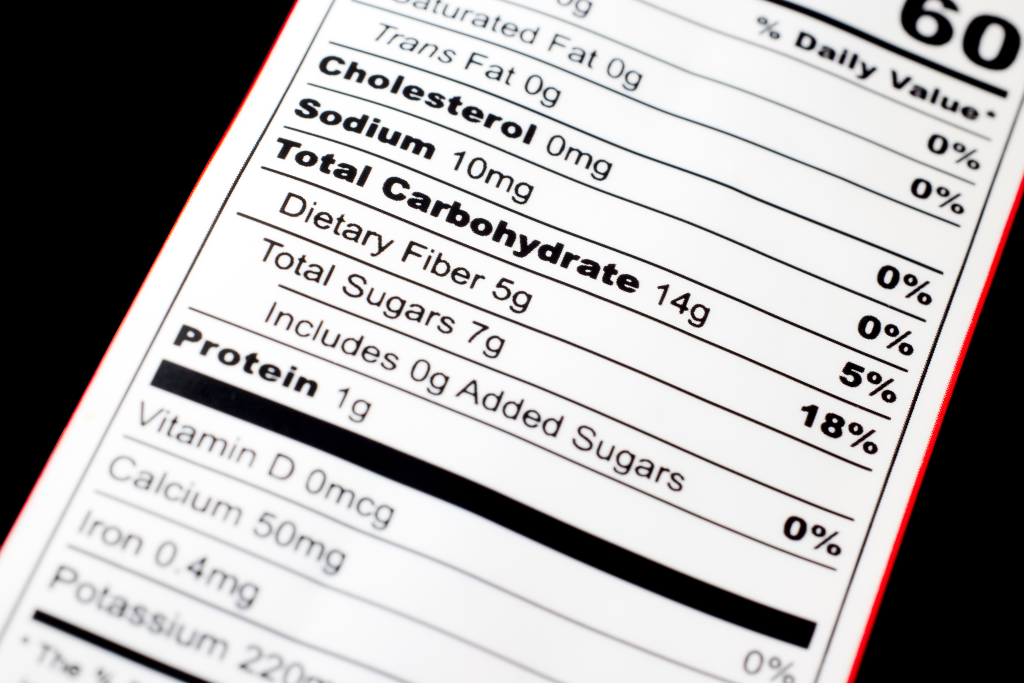At a glance
While fiber is often recommended for promoting regular bowel movements, consuming excessive amounts can worsen constipation and digestive discomfort in some individuals. Optimal digestive health relies on the right type of fiber, adequate hydration, balanced gut bacteria, and proper bile flow. Making beneficial dietary and lifestyle changes can improve gut motility and overall digestive function.
Although a high-fiber diet is generally promoted as essential for regular bowel movements, this isn’t always accurate. In fact, consuming too many fiber-rich foods can worsen gut health and contribute to constipation.
Let’s debunk the fiber myth and learn how to support optimal digestive health with simple and effective dietary and lifestyle changes.
What is fiber?
Fiber is the indigestible part of plant foods, consisting primarily of plant cell walls and other fibrous components that the body cannot digest or absorb.
Dietary fiber is categorized as soluble and insoluble fiber, based on how it interacts with water and functions in the digestive system.
Soluble fiber dissolves in water to form a gel-like substance in the digestive tract, which can slow digestion and support gut bacteria. It’s naturally found in vegetables, fruits, legumes, oat bran, barley, and nuts.
This type of fiber has also been found to support balanced blood sugar levels and may help lower cholesterol.
In contrast, insoluble fiber, mainly found in whole grains, wheat bran, cereals, lentils, beans, and brown rice, doesn’t dissolve in water and instead adds bulk to stool. This can enhance feelings of fullness and has shown potential to help lowering body weight.
While dietary fiber can be an important part of a healthy diet, consuming it in excess, especially from the wrong sources, can disrupt gut health and may actually increase the risk of constipation.
Watch the video to discover why high-fiber foods may not be ideal for those with gut issues.
The fiber myth
A high-fiber diet is commonly recommended to support digestive wellness, and many health claims associate plant fiber intake with improved gut function.
While fiber can support digestive health, increasing its intake, especially from fiber supplements or excess insoluble fiber, can worsen symptoms of chronic constipation and may be problematic for those with irritable bowel syndrome (IBS).
“Insoluble fiber adds volume to stool, and if the digestive system is already working sluggishly or is blocked, adding fibrous bulk can increase intestinal pressure,” explains Dr. Berg. “This is likely to cause more abdominal pain and discomfort, and make constipation worse.”
This has been confirmed by research published in the World Journal of Gastroenterology, which investigated the role of fiber-rich foods in the management of constipation.1
The authors concluded, “Our study shows a very strong correlation between improving constipation and its associated symptoms after stopping dietary fiber intake.“

How much fiber do you really need?
While daily fiber intake recommendations vary by age and sex, research published in The BMJ suggests that most adults should aim for between 25 and 38 grams daily.2
However, many people consume far less than this, and while fiber is important for gut health, increasing fiber intake isn’t always better, especially for individuals with digestive issues.
In certain cases, such as during flare-ups in those with inflammatory bowel disease (IBD) or small intestinal bacterial overgrowth (SIBO), low fiber control diets may be recommended to reduce strain on the digestive system.
Rather than focusing on the quantity of fiber, it’s more important to consider the type and source. Non-starchy vegetables, leafy greens, berries, seeds, and nuts are nutrient-dense sources of soluble fiber that support gut health without overwhelming the digestive system.
In addition, the gut microbiome is responsible for processing dietary fiber and may need time to adjust to a sudden increase in fiber load.
Overloading the digestive system too quickly can overwhelm the microbiome’s ability to metabolize fiber, potentially leading to bloating, constipation, or other digestive discomfort.

7 tips to avoid constipation
Maintaining regular bowel movements is essential for healthy digestion and overall gut function, and there are plenty of steps you can take to help manage and prevent constipation.
Here are seven tips to promote bowel frequency and support overall digestive health.
1. Incorporate mineral-rich foods
Eating a variety of nutritious whole foods rich in key minerals such as magnesium and potassium can play a crucial role in supporting regular bowel movements.
These nutrients help relax intestinal muscles and promote smooth muscle contractions, both of which are essential for healthy digestion and preventing constipation.
Evidence published in Food Science & Nutrition highlights the crucial role of optimal nutrient status in maintaining digestive health. It underscores the importance of magnesium in supporting regular bowel function and preventing constipation.3
Some of the best mineral-rich foods include avocados, spinach, almonds, pumpkin seeds, Swiss chard, and salmon.
2. Avoid grains and sugar
Although whole grains are often recommended for digestive health, grain-rich meals can trigger blood sugar spikes due to their high glycemic index.
When blood sugar levels fluctuate rapidly, the body releases large amounts of insulin to regulate glucose concentrations.
This hormonal shift can affect the autonomic nervous system, which controls involuntary functions including digestion, leading to slower bowel movements and potential constipation.
This may explain why many individuals experience more regular bowel movements when adopting a low-carb ketogenic diet that emphasizes nutritious, low-fiber foods that are easier on the digestive system.

3. Practice intermittent fasting
Intermittent fasting is an excellent tool to support digestive health by giving the gut regular periods of rest, which can help enhance motility and improve bowel regularity.
Prolonged periods of caloric restriction also aid in reducing body weight, which is linked to better overall digestive function and a lower risk of constipation.
4. Promote healthy bile flow
Maintaining optimal bile flow is essential for effective fat digestion and regular bowel movements.
Poor bile production or sluggish gallbladder function can contribute to constipation by slowing digestion and reducing gut motility.
To naturally support the flow of bile, incorporate foods such as beets, artichokes, and dandelion greens, which have been shown to stimulate gallbladder function.
In addition, staying hydrated and consuming plenty of healthy fats such as olive oil, lard, grass-fed butter, and avocados can also help stimulate bile production and improve overall digestive health.
5. Support microbial gut diversity
A diverse and balanced population of gut bacteria is essential for healthy digestion and regular bowel movements.
Beneficial gut microbes help break down fiber, which produces short-chain fatty acids. These beneficial short-chain fats, including butyrate, help regulate gut motility, nourish the gut lining, and support overall digestive function.
To support microbial diversity, incorporate a variety of fermented foods such as yogurt, kimchi, or sauerkraut, as well as prebiotic-rich options including garlic, onions, and leeks.

6. Drink plenty of fluids
According to a study published in the European Journal of Clinical Nutrition, even mild dehydration can significantly impact gut motility and is a major risk factor for developing constipation.4
Staying hydrated is crucial for preventing constipation as water helps keep stool soft and easier to pass. When the body is dehydrated, the colon absorbs more water from waste in the digestive tract, resulting in dry, hard stools that are difficult to pass.
7. Promote optimal stomach acidity
Optimal stomach acidity is essential for breaking down food, absorbing nutrients, and regulating proper digestive flow. Low stomach acid can impair digestion and slow gut motility.
To support healthy acid levels, consider taking a diluted apple cider vinegar drink before meals and include plenty of naturally acidic and bitter foods such as lemon juice, ginger, and fermented vegetables in your meal plan.
Key takeaways
- Excessive fiber intake, especially from supplements or high-grain foods, can exacerbate constipation and bloating in individuals with sluggish digestion or gut imbalances.
- Soluble fiber from non-starchy vegetables, berries, seeds, and nuts supports gut health without overloading the digestive system.
- Maintaining optimal hydration and electrolyte balance in combination with intermittent fasting can enhance gut motility and help maintain regular bowel movements.
- Supporting bile flow, adequate stomach acidity, and microbial gut diversity further supports digestion and can help manage and prevent constipation.
FAQ
1. Do you need fiber?
Some people benefit from consuming plenty of fiber-rich foods. However, others may find that high fiber intake worsens bloating, gas, and constipation, particularly if they have an imbalance of gut microbes, sluggish digestive function, or gastrointestinal health issues.
2. Is fiber digested?
No, fiber isn’t digested or absorbed by the body. Instead, it passes through the digestive tract and may undergo fermentation by gut bacteria residing in the colon.
3. How much fiber should I consume?
While general recommendations suggest a daily fiber intake of around 25 to 38 grams per day, individual fiber needs vary.
Some people experienced improved well-being with less fiber, especially those with irritable bowel syndrome, slow gut motility, or bacterial overgrowth, where high fiber intake can worsen bloating and constipation.
4. What is the fiber myth?
The fiber myth is the widespread belief that more dietary fiber leads to better digestive health and regular bowel movements.
However, in some individuals, excess fiber consumption can worsen gut issues such as bloating, abdominal pain, and constipation, especially in people with underlying gut issues.
Sources
- https://pmc.ncbi.nlm.nih.gov/articles/PMC3435786/ ?
- https://www.bmj.com/content/378/bmj-2020-054370 ?
- https://pmc.ncbi.nlm.nih.gov/articles/PMC8645769/ ?
- https://pubmed.ncbi.nlm.nih.gov/14681719/ ?













